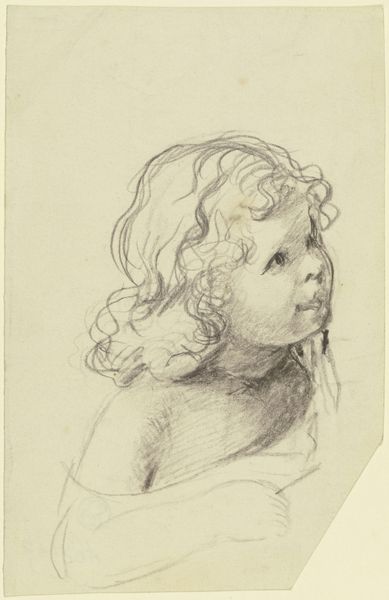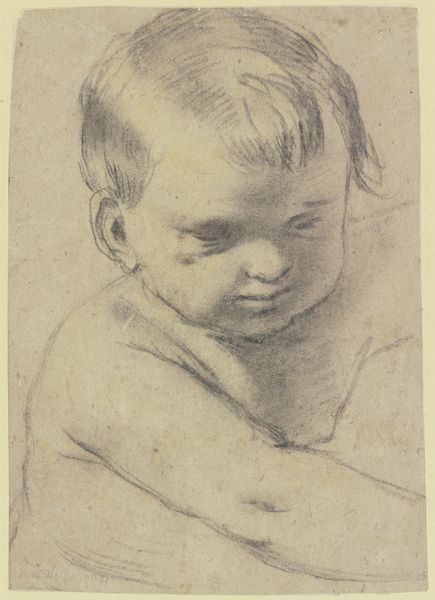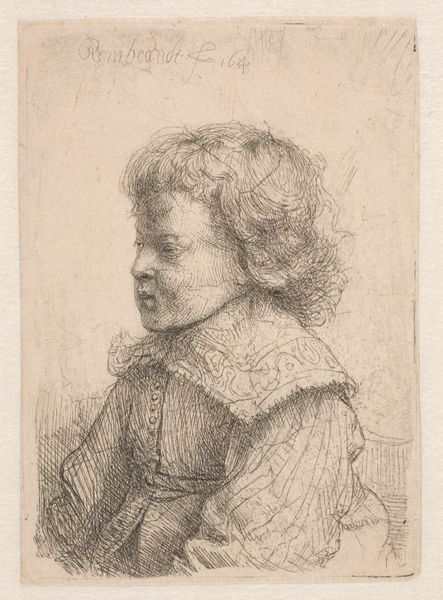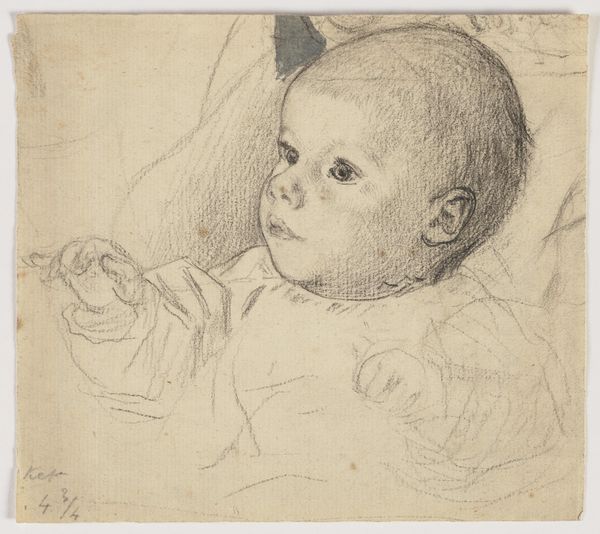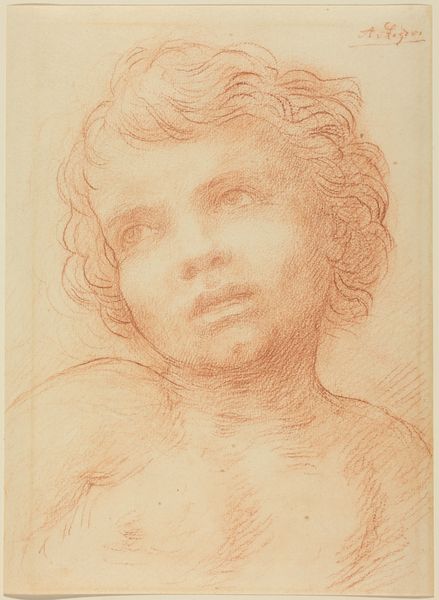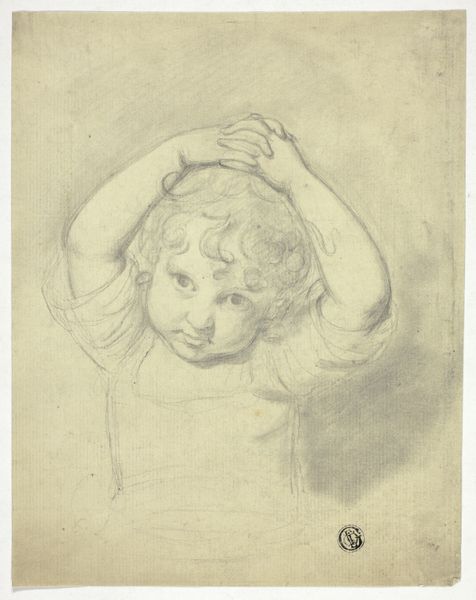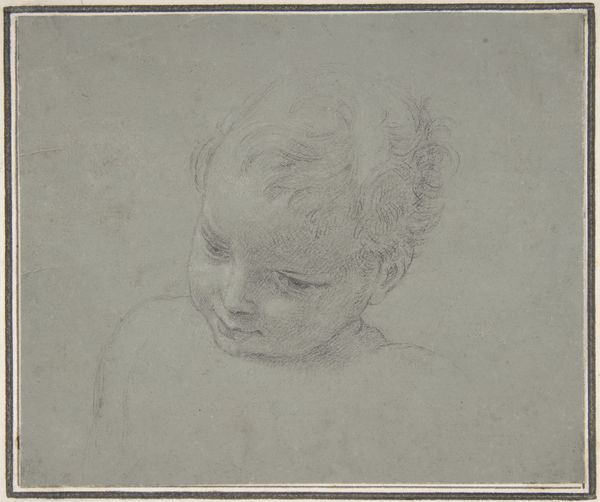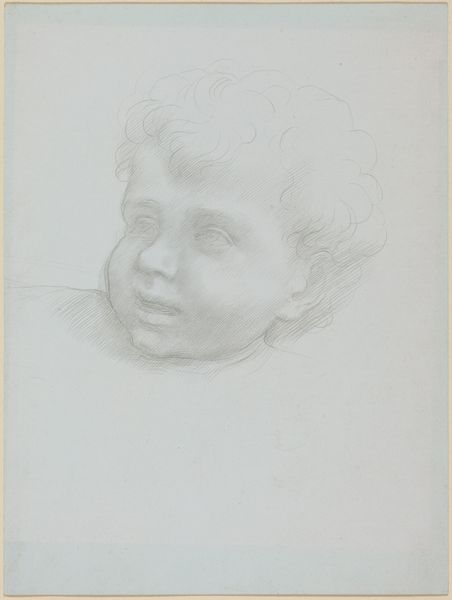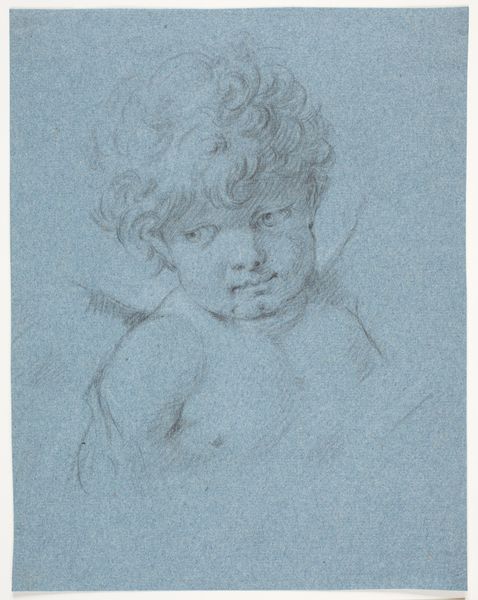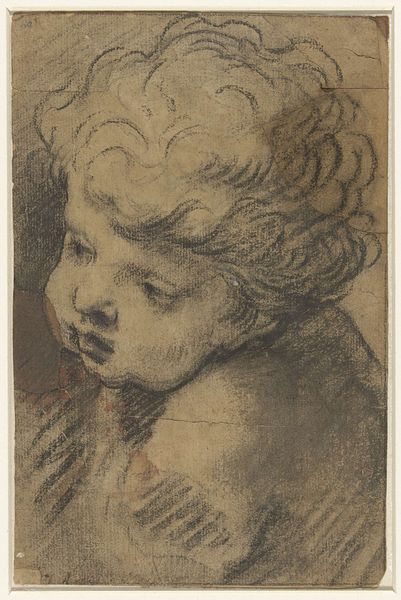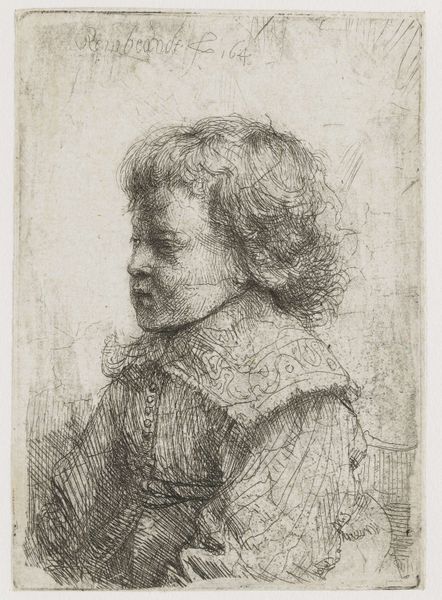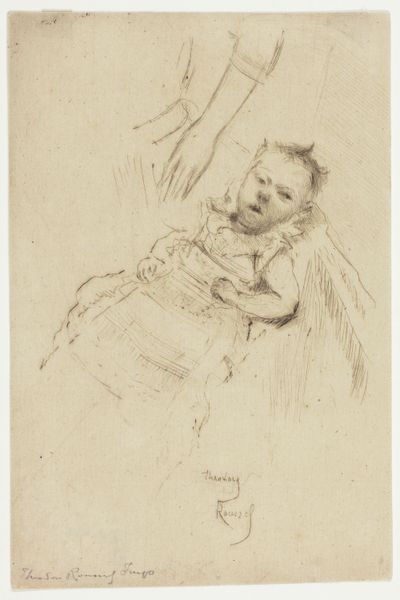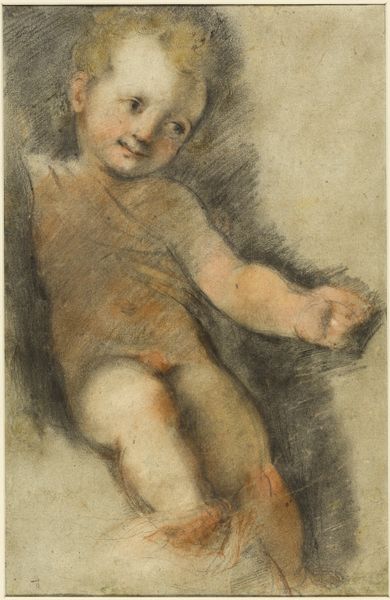
drawing, paper, pencil, chalk, charcoal
#
portrait
#
pencil drawn
#
drawing
#
16_19th-century
#
charcoal drawing
#
paper
#
pencil drawing
#
pencil
#
chalk
#
portrait drawing
#
charcoal
#
academic-art
Copyright: Public Domain
Curator: I am immediately drawn to the way the light catches on her hair; it’s soft and almost dreamlike. Editor: We’re looking at “Johanna Pauline, Tochter des Bankiers Müller,” a portrait created around 1860 by Otto Scholderer. The artwork, held here at the Städel Museum, is rendered with pencil, charcoal, and chalk on paper. The title translates to "Johanna Pauline, Daughter of Banker Müller.” Curator: Yes, and you really get a sense of the textures—the rough grain of the paper coming through, the smudged charcoal giving depth to the background. It seems the artist wanted to expose the mechanics of his craft, leaving us clues to piece together the work's origin. What do you think? Editor: Absolutely. Given her father's profession, this work offers a window into the lives of affluent girls in 19th-century Frankfurt. Here's a girl positioned as a signifier of wealth. I wonder about the expectations, constraints, and privileges she inherited. And if this drawing reflects any of those complexities. Curator: A compelling reading. Seeing the girl's averted gaze, I wonder, also, about the working conditions and demands for artistry within a commission like this. It speaks volumes about artistic production in this period—the client, the materials purchased, the labour, all contributing to the finished work. Editor: Agreed. Let’s not forget this piece enters the gallery context freighted with social expectations around childhood innocence, class performance, and familial pride. The slight upward tilt of her face, and her dreamy disposition. Scholderer positions her in this moment as more than an individual, but a symbol of upward mobility. Curator: Indeed, it serves as a fascinating study of its time. A visual contract. Editor: And from the contract itself, we may uncover a wealth of ideas. It goes beyond the aesthetic impression; it connects us to crucial cultural forces at play, inviting us to question the historical conditions shaping the very notion of personhood.
Comments
No comments
Be the first to comment and join the conversation on the ultimate creative platform.
